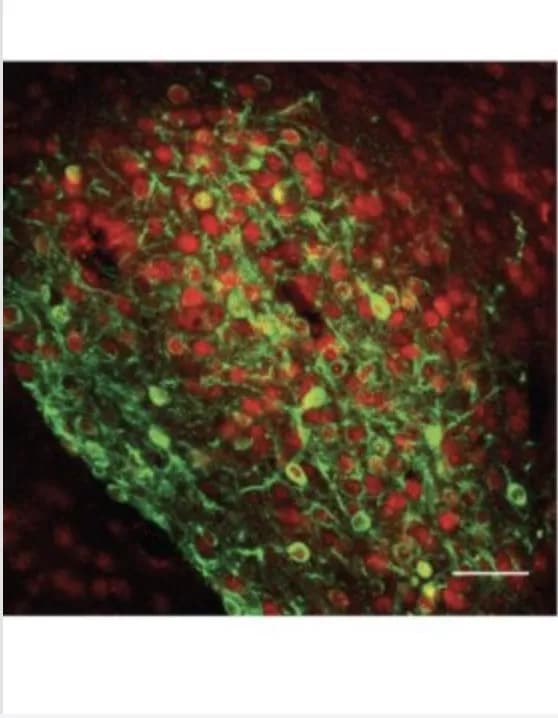
How The Brain Learns To Fear: New Understanding
Our brains wire themselves up during development according to a series of remarkable genetic programs that have evolved over millions of years. But so much of our behavior is the product of things we learn only after we emerge from the womb. We aren't born with instructions to avoid putting our hands on a hot stove. That knowledge comes from experience. Literally and figuratively, it's easy to get burned, yet we survive and thrive thanks to hard-won knowledge obtained from our experiences.
What happens in the brain when we learn that fire is very hot and can hurt us? It's the kind of learning that results from the association of a sensory stimulus and the perception of threat. New research in mice appearing in Nature Neuroscience suggests that the accepted understanding of that critical operation is incorrect in important respects.
A neuroscience team at Cold Spring Harbor Laboratory (CSHL) led by Professor Bo Li studied the relationship between two parts of the brain's amygdala -- an almond-shaped structure that comes in pairs, one situated on each side of the mouse and other vertebrate brains. The amygdalae are centrally involved in learning and memory.
Textbooks indicate that the lateral portion of the amygdala is the place where associations are forged between information provided by the senses and the perception of threat. That linkage is a crucial example of learning -- what scientists call aversive learning.
Li's team performed experiments using several technologies, the results of which surprised them. They suggest that while the lateral amygdala is involved in aversive learning, it is not the seat of the process. The new evidence points to the central amygdala instead. If correct, this could change approaches to modify memory to treat disorders such as anxiety and post-traumatic stress disorder (PTSD).
One series of experiments involved giving a mild foot shock to mice and then imaging the central and lateral parts of the amygdala. A fluorescent protein that registers when cells are active showed that the response to an uncomfortable feeling begins in the central amygdala, then registers in the lateral amygdala. In other experiments, the team blocked the activity of a particular set of neurons in the central amygdala -- named for a protein they express called PKC-delta (protein kinase C-delta). When mice with this impairment were given a foot shock, there was greatly attenuated activity in the lateral amygdala. "If the conventional view was correct, you should see normal levels of activity in the lateral amygdala -- where the activity supposedly begins. But this wasn't the case," says Li.
A final set of experiments had the intriguing aim of giving mice artificial memories -- memories of discomfort like that of getting a mild shock. This is done using optogenetics, a technology in which pulses of colored laser light are used to activate specific neurons, in this case the PKC-delta neurons of the central amygdala.
"This causes no pain to the mice, but they don't like it -- it makes them feel uncomfortable, just as getting a mild shock makes them uncomfortable. It's the kind of stimulation that leads to an aversive memory, the kind you learn from," explains Li. In effect, the scientists create a memory of a discomfort never actually experienced. The experiment shows that activation of the PKC-delta cells in the central amygdala is indeed at the heart of the aversive learning process.
This was concluded after placing the mice given the optogenetic stimulus into a cage with two chambers. Mice that received the stimulation "remembered" the discomfort and associated it with the place where they experienced it -- one of the two chambers. Later, given the freedom to move about in this space, none of the "treated" mice would venture back to the chamber where the stimulation was given. "It appears to be a stable memory," says Li. "After several days, we saw them continue to avoid the place associated with the discomfort."
Among the take-away lessons of these experiments is that PKC-delta neurons play an important role in conveying information about unexpected discomfort from the central amygdala to the lateral amygdala. The research suggests that this subset of central amygdala neurons are "fear-on" cells. Li and his team hope that this information will inform ongoing attempts to find new ways to alter fear memories that are based on spurious associations -- for example, a combat veteran freezing in fear or experiencing panic at the sound of a backfiring car.
Materials provided by Cold Spring Harbor Laboratory. Note: Content may be edited for style and length.
Disclaimer: DoveMed is not responsible for the accuracy of the adapted version of news releases posted to DoveMed by contributing universities and institutions.
References:
Kai Yu, Sandra Ahrens, Xian Zhang, Hillary Schiff, Charu Ramakrishnan, Lief Fenno, Karl Deisseroth, Pengcheng Zhou, Liam Paninski, Bo Li. (2017). The central amygdala controls learning in the lateral amygdala. Nature Neuroscience. DOI: 10.1101/126649
Related Articles
Test Your Knowledge
Asked by users
Related Centers
Related Specialties
Related Physicians
Related Procedures
Related Resources
Join DoveHubs
and connect with fellow professionals

0 Comments
Please log in to post a comment.